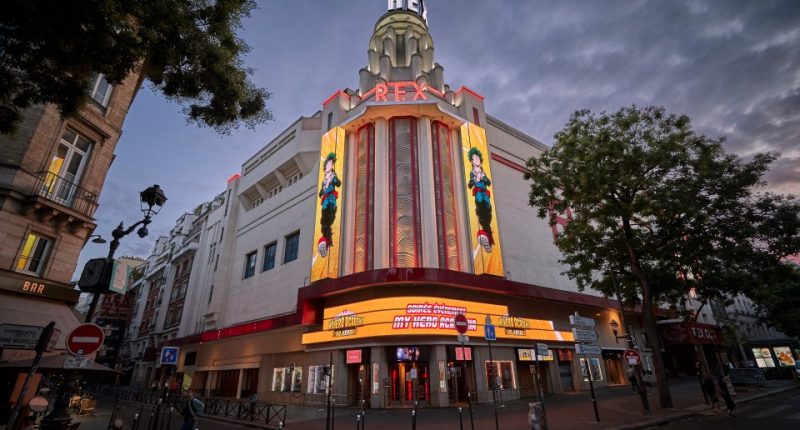Share this @internewscast.com
THE Grand Rex, nestled in the heart of Paris, boasts the title of the world’s largest cinema.
Its main hall seats over 2,700 people across three tiers – all beneath a dazzling starry ceiling that towers nearly 100 feet high.
The venue features a massive screen called “Le Grand Large” (“The Great Large”) that measures 81 feet in width and 37 feet in height, covering an area of over 3,000 square feet.
Another of the hall’s stage screens, used for live performances and concerts, spans nearly 55 feet wide and 23 feet tall.
The screens are powered by three projectors.
The building complex has seven screening halls, one concert and show venue, a club and a museum.
The giant cinema was envisioned in the early 1930s by wealthy French film producer Jacques Haïk.
His goal was to build a cinema with a capacity of over 5,000 spectators, spanning more than 21,500 square feet.
While he may not have reached that seating capacity, the Grand Rex’s hall certainly matches the envisioned size.
Haïk’s Tunisian roots are said to have inspired the cinema’s Mediterranean ambience and baroque style.
The architects responsible for the building specialized in creating “atmospheric halls” and have designed over 400 settings of imaginary American cities with cloudy or starry skies.
The Grand Rex’s decor has earned it the title of the most beautiful cinema in the world by Time Out in February.
The facades, roof, hall, and decorative elements of the building have been recognized as a “Monument historique” (“historical monument”), similar to a national heritage site in France.
The Grand Rex hall first opened its doors in December 1932.
Louis Lumière, the French engineer who played a key role in cinema’s development, was among the first guests to take a seat in the hall.
During the German occupation of France, the Grand Rex was requisitioned by the German army and transformed into a Soldatenkino – a cinema reserved for soldiers on leave.
In September 1942, it even became the target of a bombing by the Détachement Valmy.
The cinema reopened in October 1944 after the Liberation of Paris.
It is now visited by over one million people each year.
Meanwhile, Madrid boasts a huge cinema complex that can seat almost 1,000 viewers and has 25 screens.
The Spanish complex is called Kinepolis Madrid Ciudad de la Imagen, meaning Movie City.
This multiplex, featuring up to 25 screening rooms, holds the title of the world’s largest cinema by total capacity.
Ciudad de la Imagen belongs to Kinepolis Group, a Belgian cinema chain formed in 1997.
The cinema first opened its doors in 1998.























